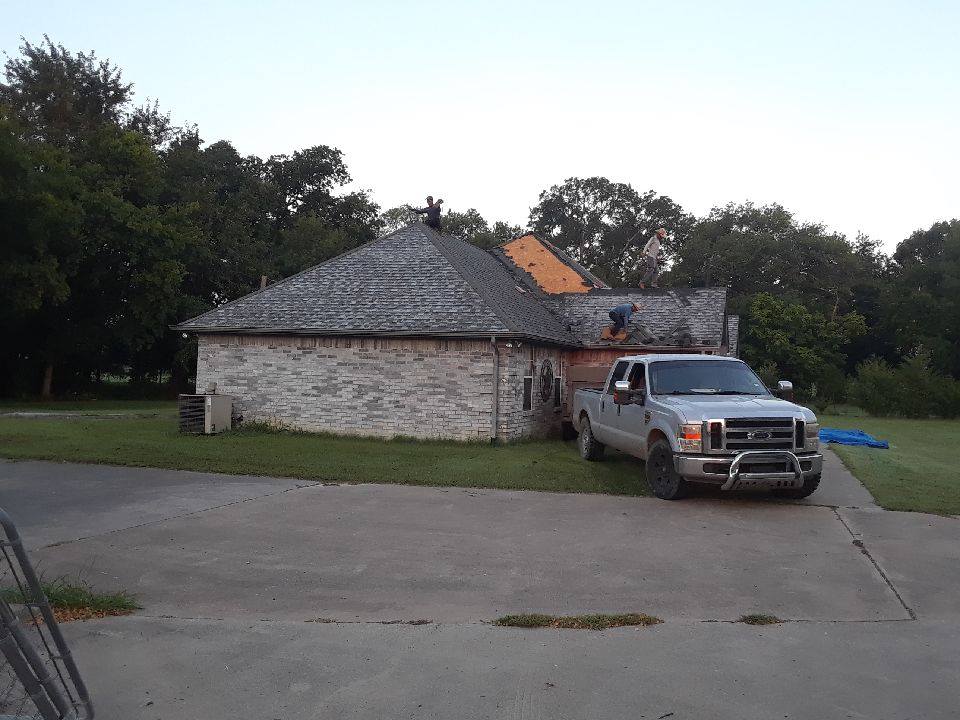How Can You Protect Your Roof from Summer Storms? Essential Defense Against Hail, Wind, and Sun
Summer storms bring some of the most challenging weather conditions your roof will face all year. From intense heat and UV radiation to sudden hailstorms and high winds, these seasonal threats can cause significant damage to unprepared roofing systems. Understanding how to protect your roof from summer weather extremes is crucial for maintaining your home’s integrity and avoiding costly repairs.
At Texas Roofing Pro, we understand that every roof faces unique challenges during storm season. The combination of extreme temperatures, severe weather events, and intense solar exposure creates multiple stress points that can compromise even well-built roofing systems. That’s why comprehensive storm protection requires a multi-faceted approach that addresses each type of threat your roof may encounter.
Whether you’re dealing with scorching heat, sudden thunderstorms, or the threat of hail damage, proper preparation and the right materials can make the difference between minor maintenance and major roof replacement. Our experience has shown that proactive protection strategies not only save money in the long run but also provide peace of mind when severe weather strikes.

Storm-Resistant Roofing Solutions: Building Your Defense Against Extreme Weather
Choosing the right roofing materials is the foundation of effective storm protection. Modern roofing technology offers numerous options designed to withstand extreme weather conditions while providing long-term durability and performance.
Impact-resistant shingles have revolutionized storm protection for residential roofs. These specially engineered materials are designed and tested to withstand significant impacts from hailstones and flying debris. Beyond their protective capabilities, many insurance companies recognize their effectiveness and offer premium discounts for homes equipped with impact-resistant roofing systems.
Metal roofing represents another excellent choice for storm protection. When properly installed, metal roofs can withstand extreme wind speeds and are highly resistant to hail damage. Additionally, metal roofing systems offer superior energy efficiency through their reflective properties, helping to reduce cooling costs during hot summer months.
The key to maximizing protection lies not just in material selection, but in proper installation techniques. Professional installation ensures that every component is correctly secured and sealed, creating a comprehensive barrier against storm damage. This includes proper fastening patterns, adequate underlayment, and attention to critical areas like roof edges and penetrations.
Understanding and Preventing Hail Damage
Hail poses one of the most immediate and destructive threats to roofing systems. Understanding how to recognize, prevent, and respond to hail damage is essential for maintaining your roof’s protective capabilities.
Hail damage often isn’t immediately visible, especially from ground level. Common signs include granule loss on asphalt shingles, which appears as dark or shiny spots where the protective surface has been removed. Denting on metal components like gutters, flashing, and vents is also indicative of hail impact. After a storm, you may notice accumulated granules in gutters or around your home’s foundation.
Prevention starts with choosing appropriate materials for your climate and risk level. Impact-resistant shingles are specifically designed to minimize hail damage, but they must be installed according to manufacturer specifications to maintain their protective properties and warranty coverage.
If you suspect hail damage, prompt professional inspection is crucial. Many types of damage may not be immediately apparent but can compromise your roof’s ability to protect your home. Professional assessments can identify both obvious and subtle damage, providing the documentation needed for insurance claims and repair planning.
Combating Heat and UV Damage
Extreme heat and ultraviolet radiation create ongoing challenges for roofing materials throughout the summer months. Understanding these threats and implementing protective measures can significantly extend your roof’s lifespan.
High temperatures cause roofing materials to expand and contract repeatedly, a process known as thermal cycling. This constant movement can lead to cracking, warping, and premature aging of roofing components. Dark-colored materials are particularly susceptible, as they absorb more heat than lighter alternatives.
UV radiation continuously breaks down the chemical bonds in roofing materials, making them brittle and prone to failure over time. This process is particularly pronounced in areas with intense sun exposure and minimal cloud cover.
Cool roofing technology offers effective protection against both heat and UV damage. These systems use specialized materials and reflective coatings designed to reflect solar energy rather than absorb it. By reducing surface temperatures, cool roofs help minimize thermal stress while improving energy efficiency.
Proper ventilation plays a crucial role in heat protection by allowing hot air to escape from attic spaces. Effective ventilation systems include intake vents at the roof’s edge and exhaust vents at the peak, creating natural airflow that reduces heat buildup and moisture accumulation.
Wind Resistance and Comprehensive Maintenance
High winds pose significant threats to roofing systems, creating uplift forces that can tear materials loose or cause structural damage. Effective wind resistance requires attention to both material selection and installation quality.
The strength of your roof’s wind resistance depends largely on how well components are connected to the underlying structure. Proper fastening patterns, adequate edge securement, and quality installation of all roof elements are essential for withstanding high wind events.
Regular maintenance is your best defense against all types of storm damage. Annual professional inspections can identify potential problems before they become serious issues, including loose fasteners, damaged flashing, or deteriorating seals around roof penetrations.
Preventive maintenance tasks include keeping gutters clean and functional, trimming overhanging tree branches, and ensuring that all roof penetrations remain properly sealed. These simple steps can significantly improve your roof’s ability to withstand severe weather while extending its overall lifespan.
Post-storm inspections are equally important, even when no obvious damage is visible. Professional assessment after severe weather events can identify hidden damage and prevent small problems from developing into major issues.
Ready to strengthen your roof’s defenses against summer storms? Contact Texas Roofing Pro today for a comprehensive evaluation of your roofing system. Our experienced team can help you identify vulnerabilities and implement effective protection strategies. Don’t wait for the next storm to test your roof’s limits—take action now to ensure your home stays protected when severe weather strikes.

